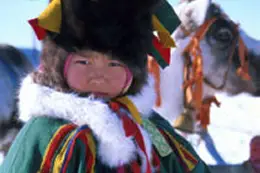Nenets is a language that is spoken in the Russian federation. It is also spoken in the northwest part of Siberia. A total of 27,000 people speak this language. Nenets is a Samoyedic language with 2 main dialects. These are the Tundra Nenets and the Forest Nenets. Approximately 95% of Nenets speak the Tundra dialect. There is a limited amount of mutual intelligibility between the 2 languages. Most young people in Siberia who speak Nenets are fluent in the language. This is in contrast to Nenets speakers in Russia as only a few children speak Nenets. The majority of the speakers tend to be the elderly or the middle aged. The young generation speakers in Russia prefer to speak Russian instead. A lot of school aged children in Siberia also learn Russian.
Initially, the Nenets used pictographs when they wanted to mark out their property. These pictograph symbols were known as tamga. Nenets was first written in the 1830s. Religious texts by Venyamin Smirnov were written using the Nenets language. In 1931, a standard Nenets orthography was developed based on the Latin alphabet. The Cyrillic alphabet was adopted in 1937. The literary language of Nenets is based on the Tundra dialect. The only Nenets word that can be found in the English dictionary is the word ‘parka’. Parka is the traditional leather jacket of the Nenets, made from fur or skin. It normally has a hood. The Nenets language has a rich vocabulary when it comes to the description of nature and weather conditions. This is particularly in relation to snow and cold weather conditions, hunting, fishing and rein deer rearing.
The term Nenets means ‘man’. This term was originally used by the Northern Nenets speakers. Alternate names for the Nenets language includes Nenec, Nentse, Nenetsy, Yurak Samoyed and Yurak. Nenets is closely related to Finnish, Hungarian and Estonian. The Nenets language has been greatly influenced by Russian. The Northern Khanty and the Komi have also influenced the Tundra Nenets. The Forest Nenets have been influenced by the Eastern Khanty to a small degree. The Nenets have a similar origin to the Enets and the Nganasan people.

siberia not serbia lol
Thanks 🙂